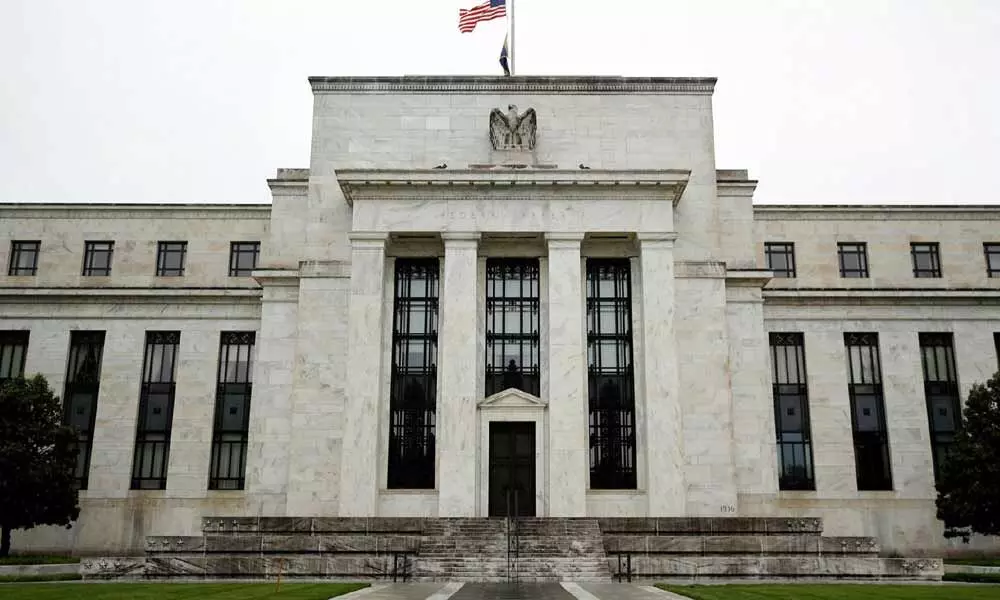Real risk for Fed won't be tapering, but timing
After the growth shock of 2020 and the inflation shock of 2021, markets are not ready for a policy shock in 2022
image for illustrative purpose

The Federal Reserve has met the historic challenge of navigating the world's largest economy through a pandemic. But as the central bank prepares to reduce its emergency Covid stimulus, finding the next normal - for monetary policy, markets and the economy - will be its greatest test yet.
In achieving a robust recovery, the latest round of quantitative easing, the fifth in the last decade, has seen the Fed's balance sheet expand by some $4 trillion, equivalent to 20 per cent of US gross domestic product, since March 2020.
Against this backdrop, the Fed's cautious signalling toward ending QE at Jackson Hole achieved the seemingly impossible by not only preventing a repeat of the markets' 2013 'taper tantrum,' but by actually easing financial conditions, via lower real interest rates, higher stocks and a cheaper dollar. The policy pragmatism is well justified: By calming markets, the Fed has cleared the way for tapering asset purchases.
The central bank's strategic messaging this time around is that it will be the economy, not policy, that will determine the path of real rates from here. Under its new, flexible average inflation targeting regime, policy is targeting inflation that is "moderately" above 2 per cent for some time to compensate for past undershoots. This means lower real rates, keeping growth hotter for longer.
To reach this target, the current policy guidance states that, even with US inflation averaging more than 5 per cent in the last three months, the Fed is seeking "substantial further progress" toward full employment before scaling down stimulus. And only at the point when the economy has reached maximum employment, with inflation running sustainably at or above two per cent, after asset purchases have ended, will policy makers consider raising interest rates above the zero lower bound.
In other words, unless the economy overheats beyond full employment, with labour costs running ahead of productivity trends, the policy priority is to pursue a strong recovery via excess demand. The result will be more, not less, inflation in the pipeline. The real risk for the Fed won't be tapering, but timing.
Acting too early to remove stimulus will cement Covid scarring in labour markets, repeating the policy mistakes of the decade after the global financial crisis and the dire social and economic welfare consequences. But acting too late means more persistent inflation pressures will emerge, eroding household real incomes and corporate profit margins, and thereby shortening the recovery. Either way, the cost will be loss of Fed credibility and greater macro-financial volatility than markets currently expect. The trouble is, with new Covid variants affecting growth, it will be a while before clarity emerges on the next post-Covid normal.
On the inflation front, while markets now acquiesce that much of the current overshoot is linked to temporary pandemic-related bottlenecks and supply imbalances, corporate anxiety about high costs is running hot. And although the current rate of inflation may be unsustainable, the upward reset in wholesale price levels and housing costs is here to stay.
This will act as a speed brake on private investment - the very force needed to take over from fiscal expansion to support the economy's healing from Covid and offset the negative effects of an aging population, de-globalization and climate change on trend growth. Not that there is any sign that imbalances in the real economy will get resolved any time soon. While US GDP returned to its pre-pandemic level in the second quarter, labor markets remain in a state of unprecedented disruption. The pandemic has displaced more than 5 million US employees, or 3.3 per cent of the labor force, but it has also shrunk the pool of available labor by 3 million, or 2 per cent since 2019. What's more, the US working age population (the cohort aged 15-64) is no longer growing.
Workplaces are also requiring ever more skills following the mass-scale technology adoption and corporate restructuring during the pandemic. These forces are constraining labor supply, contributing to higher costs for goods and services, just as the economy's reopening fuels demand. Record US job openings in excess of 10 million and rising wage pressures signal that job markets are tighter than pre-pandemic comparisons would suggest.
For markets, the prospect of more Fed liquidity and lower interest rates is a short-term boon, thanks to lower discount rates and higher earnings reflation that lift asset prices and reduce credit costs. But the longer US Treasury yields diverge from the reality of stronger US nominal GDP growth, the greater the risk that Fed tightening will bring back bond and stock market volatility, capital losses as deeply negative real yield levels normalize, and weaker real asset returns amidst higher inflation. Again, the Fed is right to be stepping cautiously at the turning point of the policy cycle, against the fog of Covid uncertainty and economic disruption. The risk is that the economy will surprise policy makers, on both the recovery and inflation, leaving policy on the wrong side of economic risks and markets (once again) on the wrong side of the policy calculus. After the growth shock of 2020, and the inflation shock of 2021, markets will hope to avoid a policy shock in 2022. Easing them into the next normal will be the Fed's toughest job yet. (Bloomberg)

